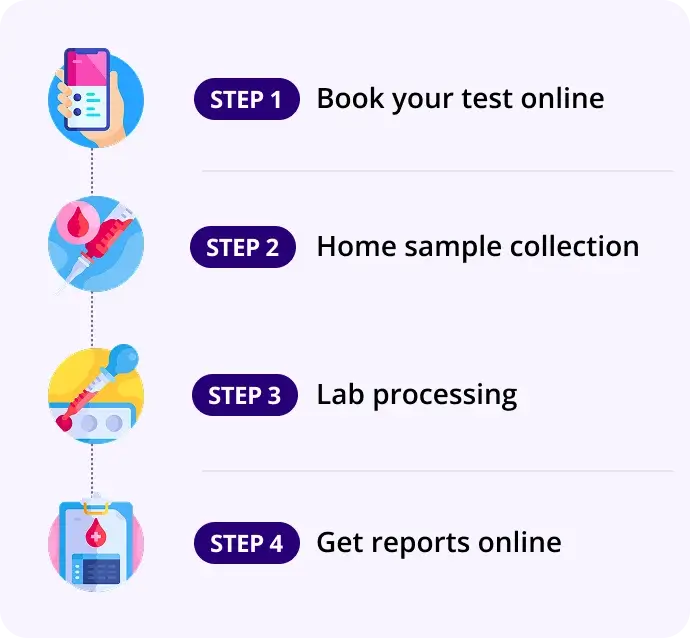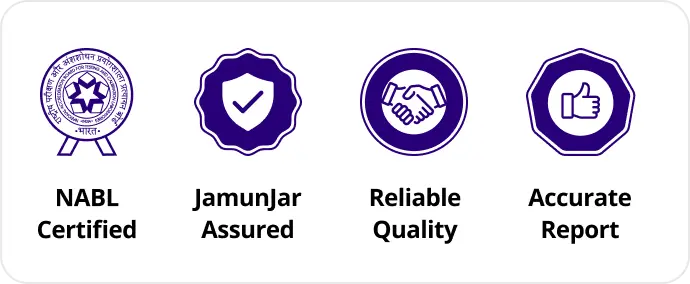Breast lump
Report in 252Hrs
At Home
No Fasting Required
Details
To identify cancerous, precancerous, or non-cancerous changes
₹350₹1000
65% OFF
🎗️ Breast Lump – Clinical Overview
Aspect | Details |
|---|---|
What is it? | A breast lump is a swelling, bulge, or mass in the breast tissue that feels different from surrounding tissue or the other breast. |
Location | Can occur in any quadrant of the breast or near the nipple/axilla. |
Size | May range from a few millimeters to several centimeters. |
Consistency | Soft, firm, rubbery, or hard; movable or fixed. |
Painful? | Some are painful (usually benign), others are painless (possibly suspicious). |
🧬 Common Causes of a Breast Lump
Type | Examples | Notes |
|---|---|---|
🟢 Benign | Fibroadenoma, cyst, lipoma, abscess | Common in younger women; often movable and smooth |
🟡 Hormonal | Fibrocystic changes | Related to menstrual cycle; may vary in size |
🔴 Malignant | Breast cancer (ductal, lobular, inflammatory) | Usually hard, fixed, irregular in shape |
🦠 Infectious | Mastitis, abscess (especially in lactating women) | Redness, warmth, tenderness, may have pus |
🧬 Other | Phyllodes tumor, fat necrosis | May require biopsy to differentiate |
🔍 Red Flag Symptoms (Seek Medical Help Immediately)
- Lump that persists or grows
- Skin dimpling or changes (orange-peel appearance)
- Nipple retraction or bloody discharge
- Axillary lymph node enlargement
- History of breast cancer in the family
🧪 Diagnostic Evaluation
Step | Test/Procedure | Purpose |
|---|---|---|
1️⃣ Clinical Breast Exam | By doctor (palpation, inspection) | Initial assessment |
2️⃣ Breast Ultrasound | First-line for women <40 or cystic lumps | Detects solid vs fluid-filled masses |
3️⃣ Mammography | Standard for women >40 years or suspicious lumps | X-ray to detect masses, calcifications |
4️⃣ MRI Breast | For dense breasts or high-risk patients | Better soft tissue contrast |
5️⃣ Fine Needle Aspiration (FNA) | Removes cells for cytology | Simple, outpatient, quick assessment |
6️⃣ Core Needle Biopsy | Removes tissue for histopathology | More accurate than FNA |
7️⃣ Excisional Biopsy | Complete surgical removal for analysis | When imaging/biopsy is inconclusive or cancer is confirmed |
🧫 Further Tests (If Cancer Suspected)
Test | Use |
|---|---|
Estrogen/Progesterone Receptors (ER/PR) | Determines hormone responsiveness |
HER2/neu | Checks for aggressiveness and eligibility for targeted therapy |
Ki-67 | Measures proliferation index |
Tumor Markers (CA 15.3, CEA) | Monitoring response to treatment |
PET/CT Scan | Staging, if malignancy is confirmed |
BRCA1/2 Gene Testing | If family history or early-onset breast cancer |
🩺 Management Based on Type
Diagnosis | Treatment |
|---|---|
Benign cyst | Often no treatment or aspiration if painful |
Fibroadenoma | Monitoring or surgical removal if >3 cm or bothersome |
Abscess/Mastitis | Antibiotics, drainage |
Cancer (Malignant) | Surgery (lumpectomy/mastectomy), chemo, radiation, hormone therapy |
📄 Summary Table
Feature | Benign Lump | Malignant Lump |
|---|---|---|
Feel | Smooth, mobile, soft or rubbery | Hard, fixed, irregular shape |
Pain | Often present | Rarely painful |
Skin/Nipple changes | Usually absent | May be present (dimpling, discharge) |
Growth | Slow or stable | Rapid or progressive |
Age group | <40 years typically | >40 years typically |
How our test process works!

